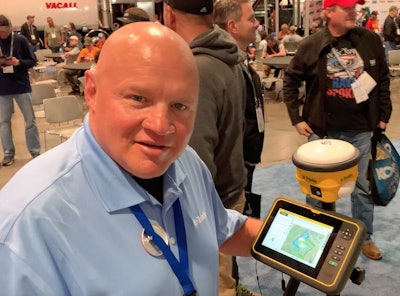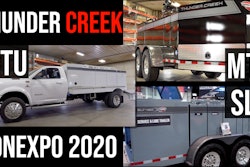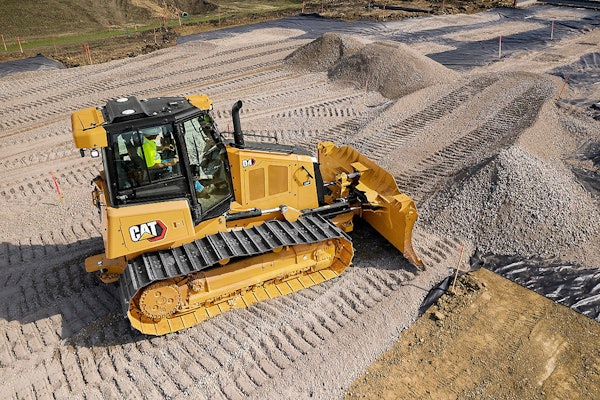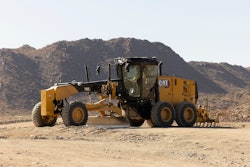
By now most earthmoving contractors are familiar with using a GPS rover to do site surveys. Of course, these require the use of a nearby base station to calculate corrections to the GPS signal and a radio to broadcast the corrections to the rover. And to make sure you’re getting the points exactly right, you have to hold your rover pole perfectly plumb, and it has to be in a spot where GPS signals can penetrate.
Trimble has made this process even faster, simpler and more cost efficient with its new SPS986 GNSS rover and “smart” antennae receiving signals from the company’s CenterPoint RTX satellite-delivered corrections. The company introduced the rover during ConExpo 2020.
Let’s talk about the CenterPoint RTX first. This is a system of base stations Trimble owns around the world. Through the mathematical process of triangulation, these base stations can automatically correct satellite positioning signals and send a corrected GPS signal to any rover anywhere in the world that is set up with the proper Trimble antennae. Instead of getting your corrected signal from a radio broadcast sent from a nearby base station, you simply turn on your SPS986 GNSS rover and it picks up the corrected signal from Trimble’s network.
“The technology has been around,” says Scott Crozier, general manager of Trimble’s civil engineering and construction division, “but it has just recently become accurate enough to do survey work.”
With the SPS986 rover, CenterPoint RTX converges to full accuracy in less than a minute in the United States select regions, and in less than 15 minutes across the rest of the world, says Crozier. Survey accuracy in the horizontal plane is less than 1 inch/2 centimeters and less than 2 inches/5 centimeters vertical. And because CenterPoint RTX is connected to Trimble’s global network and delivered via multiple satellites, you can map anywhere, whether you’re in a remote location or working across a large geographic area. Additionally, connecting to CenterPoint RTX via satellite or cell means there’s no need to worry about losing connectivity. Access to Trimble’s CenterPoint RTX is via subscription.
 Casey Cyrus demonstrates the Trimble SPS986 tilt-compensated rover at ConExpo.
Casey Cyrus demonstrates the Trimble SPS986 tilt-compensated rover at ConExpo.The SPS986 rover has a few features that make it unique as well, including the ProPoint “tilt-compensation.” All previous rover designs required the pole to be held perfectly plumb to mark the spot. This made it difficult to locate points on the edges of buildings or where the physical surroundings interfered with the positioning of the rover. With tilt-compensation on the SPS986, you can hold the unit at an angle and accurately locate these hard to reach points.
“ProPoint lets you work in harsh GNSS environments, up against bushes or under a canopy of trees,” says Casey Cyrus, business area manager at Trimble. “Before, you had to have line of sight to the satellite signal. Now we can do multiple regressions in the computer and stake the corner of a building and get points you could never reach before.”
One last thing just for fun: Check out our quick video of Spot, the robotic dog, a collaboration between Trimble, Boston Dynamics and Hilti. We’ve written about the Spot collaboration project before, and you can find the details by clicking here.










